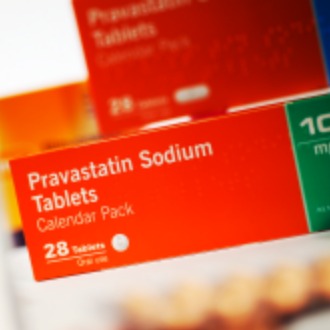The numbers needed to treat of statins is more than 400 for some low-risk patients who are eligible for the medication, researchers have estimated.
A team of researchers from the National University of Ireland concluded that many patients who should be on statins according to the latest guidance would choose not to take them if they were given more information on how effective they are.
They tracked changes to European statin guidance over the past 30 years and found a 600% increase in the number of over 50s eligible for the drugs.
In the late 1980s, only the most high-risk patients – 8% of the over 50s – would have met guideline criteria for statin treatment but by 2016 the figure was 61%.
The researchers also calculated that the number needed to treat at the lowest levels of risk to prevent a major cardiovascular event in the 1990s was 40, which a decade later had risen to 73 but by the 2012 and 2016 versions of the guidance was 400.
Pointing to previous research that looked at what risk reduction patients would accept in return for having to take a daily pill for life, they found that most would be unhappy with the trade off if they had more information.
Based on the premise that a majority of patients (but not all) would consider taking a long-term medicine if the number needed to treat to prevent a heart attack or stroke was under 30, only those at highest risk would be likely to find it an acceptable justification, they wrote in the British Journal of General Practice.
In a separate paper published in BMJ Open, the same team of researchers carried out an analysis of systematic reviews for primary prevention with statins and concluded there was limited evidence of effectiveness.
Taken together, the researchers said decision-making around statins should consider individual risk and whether that justifies the potential harms of taking a daily medicines for life.
Another recent study found that half of patients taking statins had a sub-optimal response to the drugs.
In February Public Health England launched a campaign to increase the number of adults who have blood pressure and cholesterol checks.
Study leader Paula Byrne said: ‘One would have to question whether some patients, who may achieve very small reductions in risk of cardiovascular disease by taking statins, would agree to take this medication were they fully informed.
She added: ‘From a societal perspective, we need to ask whether or not statin use in such people represents value for money in the health sector.’
Dr Jane Wilcock, chair of the RCGP overdiagnosis group, said it was not straightforward as patients would have differing views on acceptability.
‘I would be surprised if any patient wanted to take a daily statin at a 1 in 400 NNT benefit and suggest that the NHS should not be offering it but needs to review the lower risk for prescribing with statins.’
She added that the role of the GP was to take individual patient circumstances into account but that ‘number needed to treat’ should be embedded into all clinical guidelines and recommendations including resources for patients.
‘It is great to have a group of health economists working with a primary care professor to look at risk in more depth – we need lots more of this in order to provide non- statisticians with estimates of effect in order to support patients to make best decisions for themselves.’
Pulse October survey
Take our July 2025 survey to potentially win £1.000 worth of tokens














